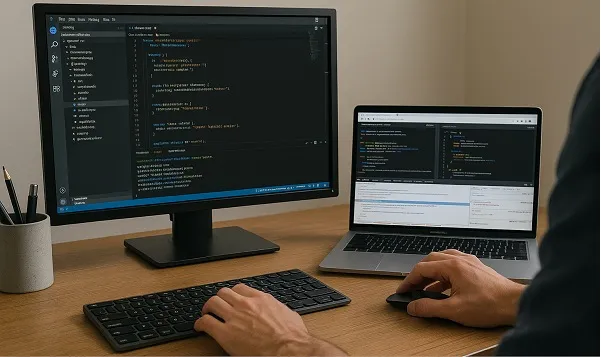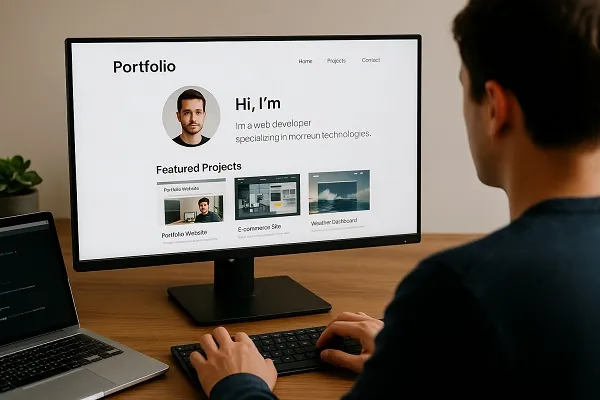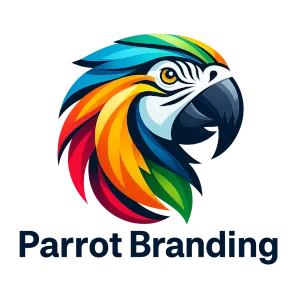Becoming a web developer is a goal many people pursue because it offers creative problem solving, remote work options, and a stable career path. Learning how to enter this field requires understanding the skills that matter, the tools to practice with, and the steps that help you progress from beginner to job ready.
Building a Strong Foundation in Web Development
Before advancing to complex projects, create a solid foundation. This ensures that everything you learn later becomes easier and more intuitive.
Learn the Core Front End Languages
Master these first since they power everything users interact with:
- HTML for structure
- CSS for layout and styling
- JavaScript for interactivity
Short daily practice sessions help more than long, infrequent study. Focus on building simple, real projects such as landing pages or small web apps. These early wins accelerate your confidence and understanding.
Understand How Websites Work
You don’t need to dive into deep theory, but get comfortable with:
- How browsers render pages
- What a server does
- How client side and server side interact
This gives you a clearer picture of the systems you’ll build.
Choosing a Specialization Early

You don’t have to commit to a path forever, but choosing a direction helps you stay focused.
Front End Development
Front end developers build the user interface and work heavily with:
- Responsive design
- Component based development
- Accessibility practices
- Frameworks like React, Vue, or Svelte
Back End Development
Back end developers focus on data, logic, and performance. You’ll learn:
- Server side languages like Python, JavaScript, PHP, or Ruby
- Databases
- API development
- Authentication and security basics
Full Stack Development
Full stack developers cover both sides. Many beginners choose this path because it increases employment flexibility and offers broader exposure to the field. You’ll combine UI development with server side logic to build complete applications.
Essential Tools to Learn

Web development includes a variety of tools. Getting comfortable with them makes you more productive and improves the quality of your work.
Text Editors and Integrated Development Environments
Popular options include:
- Visual Studio Code
- WebStorm
- Sublime Text
Pick one and stick to it until you’re comfortable navigating quickly.
Version Control Systems
Git is a must learn tool. It helps you manage versions of your projects, collaborate with others, and maintain clean workflows.
Browsers and DevTools
Modern browsers provide excellent debugging tools. Learn how to inspect elements, analyze performance, and troubleshoot errors efficiently.
Building Real Projects That Demonstrate Skill

Employers and clients value proof. Projects show what you can actually do.
Start with Achievable Projects
Begin with:
- Portfolio websites
- Product landing pages
- Basic CRUD apps
- Weather dashboards
- To do lists with local storage
These projects teach core concepts without overwhelming you.
Add More Advanced Projects
As you improve, create:
- Full authentication systems
- E commerce mockups
- Data visualization dashboards
- Blog platforms with a CMS
- API driven applications
These help you practice problem solving, scalability, and code optimization.
Strengthening Your Technical Skillset

Once the basics are familiar, expand your skillset to increase your opportunities.
Front End Skills to Develop
- Responsive layout techniques
- CSS frameworks like Tailwind or Bootstrap
- JavaScript frameworks
- Web accessibility
- Component architecture
Short, focused practice sessions work well for these areas.
Back End Skills to Develop
- Relational and NoSQL databases
- ORM tools
- API structure
- Routing and middleware
- User authentication
Understanding these allows you to build real, functional systems that mirror what companies expect from professional developers.
Building a Professional Presence Online

Your online presence shows employers what you can do. Even as a beginner, you can build a professional image.
Create a Strong Portfolio
Your portfolio should include:
- A clean layout
- A short introduction about who you are
- Links to your best projects
- Case study style descriptions of what you built
- A contact method
Quality matters more than quantity. Three strong, well built projects are more impactful than ten unfinished ones.
Maintain a GitHub Profile
Regular commits show consistency. Use GitHub to:
- Host your code
- Share your learning progress
- Display clean repositories with clear readme files
Recruiters often look at this before reaching out.
Preparing for the Job Application Process

Once your skills and projects are solid, begin preparing for web developer roles.
Practice Technical Interviews
Focus on:
- JavaScript interview questions
- Basic algorithm challenges
- DOM manipulation
- Debugging practice
- Building small features on the spot
You don’t need advanced algorithms for most web developer positions, so avoid spending too much time on complex problem sets.
Improve Your Resume
Keep it clean with:
- A short headline describing your specialization
- A skills section with your strongest tools
- A project section with meaningful descriptions
- Short bullets explaining your contributions
Keep it readable and targeted to web development positions.
Explore Different Job Paths
Web developers can work in many environments, including:
- Agencies
- Startups
- Corporate teams
- Freelance or contract positions
Each path offers unique experiences and ways to grow your skills.
Growing Through Practical Experience

The fastest growth happens through real experience. As soon as possible, work on tasks that mimic real world problems.
Volunteer or Freelance Projects
These help you learn:
- Communication with clients
- Project planning
- Time management
- Feature scoping and revision cycles
Even small contributions count.
Join Developer Communities
Communities give you support, guidance, and collaboration. Consider:
- Online forums
- Discord groups
- Open source project communities
- Local tech meetups
Surrounding yourself with other developers boosts your progress significantly.
What This Journey Looks Like Over Time
Becoming a web developer doesn’t happen overnight, and that’s expected. You’ll experience phases where everything clicks followed by phases where you feel stuck. Both are normal.
You’ll gain confidence through repetition, exploring new projects, fixing difficult bugs, and rewriting code as you learn better methods. Each step, even the frustrating ones, pushes you closer to becoming a skilled developer.
As you continue practicing, building projects, and applying your skills in real situations, you’ll develop the problem solving mindset and technical ability that define successful web developers. The journey is challenging but achievable, and every milestone builds momentum toward a rewarding, creative, and flexible career.
Content reviewed and published by Parrot Branding Editorial Team.

